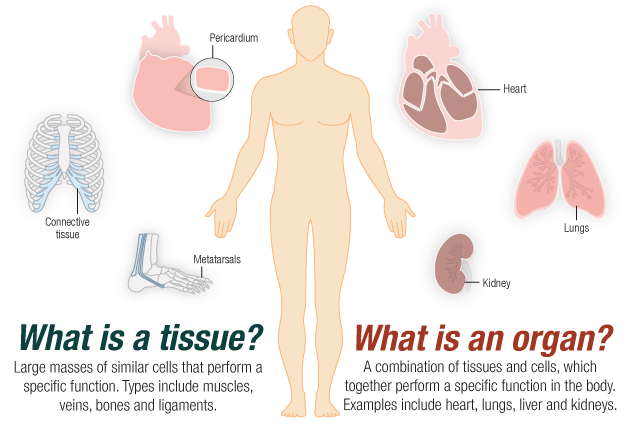Difference Between Tissue and Organ

The anatomy and physiology of a human body is extremely complex, which is why despite all the advancement in technology and medical science, there are still some things that doctors are unable to treat and correct.
A lot of studies have been done on the human body and a lot of knowledge has been collected from these studies. The body can and is studied at various structural levels, but two of the most common levels that it is studied on are tissues and organs.
Since both tissues and organs are closely associated, they are often confused by the non-medical and non-science people as being one and the same. That, however, is not the case. They are in fact pretty different in both their make as well as function.
The primary difference between tissue and organ is that the former is a collection of similar cells that perform a similar function and have a similar structure, whereas an organ is basically a cluster of two or more tissues that function to perform one or more common function.
The easiest way to distinguish between an organ and a tissue is by taking their size into consideration. The former is larger than the latter.
Both organ and tissue differ from each other on account of the functions that they can perform. While a tissue can only perform a single, simple task, an organ is capable of performing more than one task and involves a lot of complexities in its functions. This makes the study of an organ far more complicated than that of a tissue.
Taking into account the fact that an organ is made up of two or more tissues and is consequently larger than the latter, it requires a lot more energy or ATP to carry out its functions than a tissue.
Since the organs are large and have a distinct shape, they are far more easier to recognise than tissues, which pretty much look the same. Even if they are studied under a microscope, it will be difficult to instantly them one tissue apart from other.
Instructions
-
1
Tissues
A tissue is a collection of similar cells that carry out the same functions and have the same structure. They are hardly distinguishable from one another unless studied under a microscope.
-
2
Organs
Organs are formed of a cluster of tissues with similar functions and structure, which function for one or more common functions. They are large in size and therefore easily distinguishable from one another.

